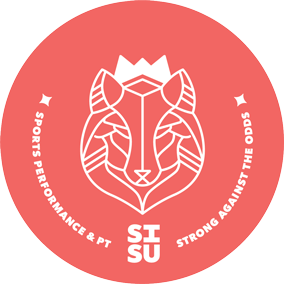Athletes of all genders need fuel—in the form of food—to exercise.
When an athlete is exercising without enough fuel, all systems of the body are affected. When the negative consequences of low fuel impact an athlete’s life and/or performance in minor OR significant ways, the issue gets a special name: Relative Energy Deficiency in Sports (RED-S).
Here are some common examples of what can go wrong when an athlete has a fuel deficit resulting in RED-S:
| System | Problem |
| Immune | Decreased ability to fight off germs |
| Skeletal (bones) | Stress fractures in bones
Low bone density |
| Cardiovascular | Low resting heart rate
Heart failure |
| Endocrine | Thyroid problems
Poor response to stress |
| Gastrointestinal | Stomach and intestinal problems, including
irritable bowel syndrome (IBS) |
| Nervous | Psychological problems, including depression |
| Reproductive | Difficulties with erectile tissue (2) |
| Blood | Iron deficiency |
| Metabolic | Low metabolic rate |
| Urinary | Bladder leakage (3) |
Ref: [1]
Athletes in certain populations may experience additional harms of not getting enough fuel. For example, younger athletes may have stunted growth and development due to low bone mineral density and/or bone stress injuries. People who were assigned female at birth (AFAB) may develop an unintended decrease in menstrual functions (this can be an irregular period, an absent period, or a delayed period). People interested in reproduction may find it more difficult to maintain fertility.
Bottom line: too little fuel is a serious issue.
Trans and non-binary athletes are at high risk for RED-S for a variety of reasons
Trans and non-binary athletes may limit fuel (calories) or fuel types (such as carbohydrates) to achieve or maintain a certain body shape in order to manage gender dysphoria. In other situations, eating to develop a certain body shape that matches gender expression is necessary to reduce the risk of violence against a trans person. Restricting fuel (disordered eating) is a coping mechanism for general stress as well as stress related to being trans or non-binary. Lastly, many trans and non-binary people do not have access to high-quality or enough fuel due to discrimination in social programs and societal failures.
If you are looking for resources to support you through disordered eating, the National Eating Disorder Association (NEDA) is a trans-friendly group with free support by chat, text, or phone.
Intersectionality and RED-S
Kimberlé W. Crenshaw is the scholar who developed the framework for intersectionality, which describes how various aspects of a person’s identity interact to determine what resource they have access to. As with many other health conditions, racist and ableist systems can cause BIPOC and/or disabled athletes to experience higher rates of RED-S (4). Sage and Spoon is a resource that offers Black, Indigenous, and People of Color of all gender identities “free online monthly peer support group for folks struggling with disordered and body-image.” They also offer a group specifically for Black people.
Looking for clues
There is not one simple test for RED-S. However, an athlete can look for clues in their overall health status or response to increases in training loads. Here is a list of common clues that RED-S may be happening:
- Prolonged or excessive fatigue
- Declining performance
- Sleep disturbances
- Irritable bowel syndrome
- Bloating, gas, acid reflux
- Shortened or absent periods
- Decreased body temperature/cold sensitivity
- Increased recovery time
- Decreased power, strength, or endurance
One of the best ways to catch the onset of RED-S is to be mindful about performance changes in response to increasing training loads.
For example, if a runner starts training for a 10k but notices new onset of irritable bowel syndrome, difficulty sleeping, and feeling sluggish during the day, it could be a tip off that RED-S is happening. That runner probably needs more fuel relative to how much they are exercising. Similarly, a para-athlete propelling a wheelchair could note signs of RED-S in response to a new training regimen when recovery takes longer and fatigue is felt throughout the day. Relative energy deficiency in sports may also be noted in the form of declining–or even stagnating–activity performance, muscle weakness, or injury.
What should a trans or non-binary athlete do if they need help managing RED-S?
The standard guidance is to (1) consult a registered dietitian or a physician who is well versed in the nutritional needs of the athlete and (2) undergo a physical examination by a medical provider to rule out other conditions that might mimic RED-S, such as a thyroid disorder or depression. One tool for searching for a trans-friendly provider that supports healthy eating is the registry by Health At Every Size (HAES). Healthline has produced a comprehensive list of tools for finding a trans-friendly medical provider for a physical examination.
Note about seeking care for RED-S: Many–if not most–medical providers are unfamiliar with the term RED-S, much less the constellation of symptoms that go with it. A trans or non-binary athlete may only be able to rely on the medical system for ruling out serious illness, and be left to address nutrition on their own or with other supportive athletes.If you have questions about accessing care for RED-S in your area, you are welcome to contact the author of this article for local referrals.
Concluding point: If you are a trans or non-binary athlete who notices any of the symptoms mentioned above, and you feel that RED-S could be a contributing factor in your experiences as an athlete (or person who likes to move), it would be pertinent to either adjust your training or adjust your fueling habits. It can be difficult to know what to do all on your own, so we encourage you to review these resources 1, 2, 3 or to reach out to Dr. Katie McGee or Dr. Ellie Somers for additional recommendations or questions.
References:
- Mountjoy M, Sundgot-Borgen JK, Burke LM, Ackerman KE, Blauwet C, Constantini N, et al. IOC consensus statement on relative energy deficiency in sport (RED-S): 2018 update. Br J Sports Med. 2018;52: 687–697.
- Logue DM, Madigan SM, Melin A, et al. Self-reported reproductive health of athletic and recreationally active males in Ireland: potential health effects interfering with performance. Eur J Sport Sci. 2021;21(2):275-284.
- Whitney KE, Holtzman B, Cook D, et al. Low energy availability and impact sport participation as risk factors for urinary incontinence in female athletes. J Pediatr Urol. Published online January 30, 2021.
- Brook EM, Tenforde AS, Broad EM, et al. Low energy availability, menstrual dysfunction, and impaired bone health: A survey of elite para athletes. Scand J Med Sci Sports. 2019;29(5):678-685.








